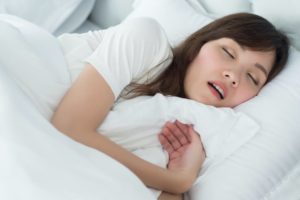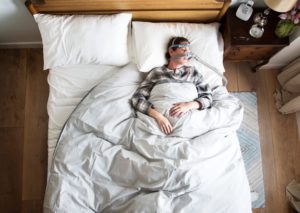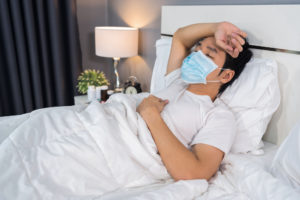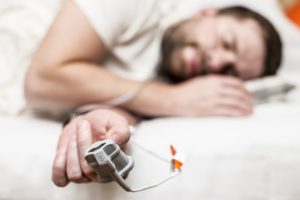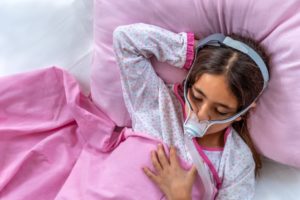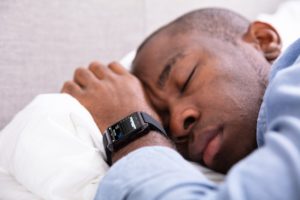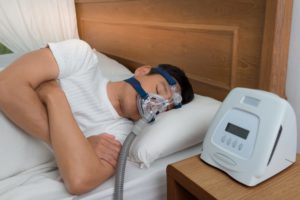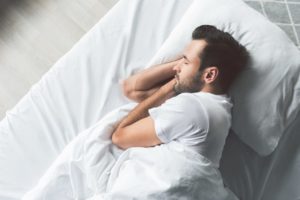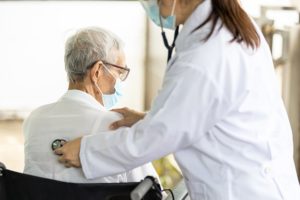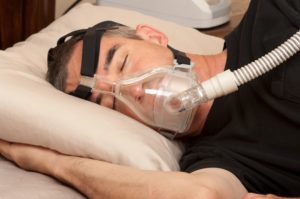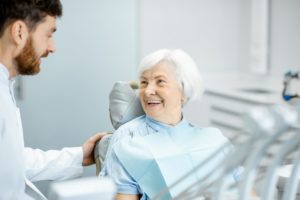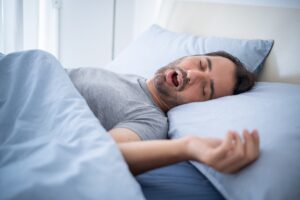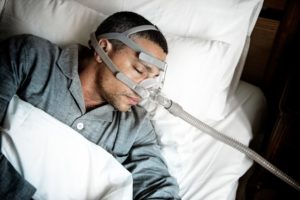When you buy through our links, we may earn a commission. Products or services may be offered by an affiliated entity. Learn more.
Hypoglossal Nerve Stimulation
The hypoglossal nerve is a motor nerve that stimulates several muscles in the tongue. These include the genioglossus, hyoglossus, and styloglossus muscles, which are involved in movements that make the tongue protrude (push forward) and retract (pull back). The hypoglossal nerve also innervates the tongue’s intrinsic muscles, which can shorten, curve, or narrow the tongue’s shape.
What Is Hypoglossal Nerve Stimulation?
Hypoglossal nerve stimulation (HGNS) is a sleep apnea treatment involving an implanted medical device created by Inspire Medical Systems, Inc. Approved by the Food and Drug Administration in 2014, HGNS treats patients with obstructive sleep apnea (OSA) by stimulating the hypoglossal nerve in a rhythm synchronized with the patient’s breathing. This stimulation helps keep the patient’s airway clear during sleep.
Understand Your Sleep Apnea Risk
Answer three questions to take charge of troubled sleep.
How Does Hypoglossal Nerve Stimulation Work?
Patients with OSA have decreased muscle tone in the genioglossus muscle, one of several muscles stimulated by the hypoglossal nerve. This results in the tongue retracting back into the throat during sleep, obstructing the airway and blocking the flow of air and reducing oxygen levels in the body. While continuous positive airway pressure (CPAP) therapy keeps the airway open using continuous air pressure, the hypoglossal nerve stimulation implant sends a gentle pulse synchronized with the patient’s breathing. This pulse signals the hypoglossal nerve to move the tongue forward, relieving the airway obstruction and allowing uninterrupted airflow.
Once the device is implanted in the eligible patient, the physician configures the settings in their own programmer. The person with the implant is then given a sleep remote, which they can use to turn on the device before going to bed and turn it off upon waking. They can also adjust stimulation within a range determined by their physician.
Why Is Hypoglossal Nerve Stimulation Used to Treat Obstructive Sleep Apnea?
Obstructive sleep apnea is a common sleep disorder in which the airway collapses frequently during sleep, causing difficulty breathing, snoring, and frequent awakenings to gasp for air. The long-term impact of sleep disrupted by OSA can be severe, including increased risk for hypertension, stroke, heart attack, and diabetes.
Treatment for OSA primarily involves continuous positive airway pressure (CPAP) therapy. CPAP is a treatment in which a machine provides pressurized air into the mouth, throat, and nose via a mask, keeping the airway open during sleep. While CPAP is reliable and often recommended as a first line treatment due to its success, one study found that compliance with the device is as low as 54% among people with sleep apnea. The intrusive feeling of the mask, time to set up, and cost of machine and parts may be to blame for inconsistent use. Regardless of the reason, many people with OSA do not receive the full benefits of CPAP and remain untreated.

Some surgical approaches have been used in OSA patients, as doctors have understood the disorder to originate from airway blockage. Surgeries have focused on remodeling or removing tissue to enlarge the airway, either by removing the tonsils, adjusting the upper and lower jaws, or inserting a breathing tube through a direct incision to the windpipe. Unfortunately, traditional approaches to surgery have not improved OSA in 59% patients.
Unlike other surgeries, HGNS requires no permanent removal or alteration of airway tissues. The hypoglossal nerve is also anatomically located for convenient surgical access and is responsive to stimulation. Results from clinical trials are promising – one year after receiving the HGNS implant, sleepers experience a 68% decrease in apnea-hypopnea index (AHI) , a score reflecting the number of breathing cessation or reduction events during sleep. Studies also report subjective improvement in quality of life measures and continued effectiveness of HGNS in the same patients four years later.
Who Can Benefit from Hypoglossal Nerve Stimulation?
HGNS placement is indicated for certain patients with moderate to severe OSA , as determined by an AHI score from 15 to 65.
HGNS is currently being studied as an alternative to CPAP for children and adolescents with Down syndrome , up to 60% of whom have OSA and often cannot tolerate other treatments like CPAP or tracheotomy. An HGNS study conducted with adolescents that have Down syndrome found a reduction in AHI scores by over 50%.
According to the FDA, sleepers who have previously failed or been unable to tolerate treatment with positive airway pressure therapies are good candidates for HGNS . In addition, not everyone with OSA exhibits the same airway anatomy and pattern of tongue collapsibility during sleep. Sleepers with some anatomical patterns are better suited to HGNS than others.
Feasibility studies for HGNS provide key information about tongue shape and pattern of collapse, indicating the people whose anatomy is likely to benefit from HGNS. For example, HGNS has been found to prevent collapse from the base of the tongue, but not prevent collapse from the sides of the throat or a collapse that entirely blocks the airway (concentric collapse) under mild sedation. Thus, the FDA recommends that all patients considered for HGNS be examined via drug-induced sleep endoscopy. HGNS is also more likely to be successful in patients with a body mass index (BMI) measuring less than 32.
HGNS is not recommended for people who are pregnant or planning to become pregnant, or for patients who already have an implanted device that might interfere with the HGNS.
Is Hypoglossal Nerve Stimulation a Good Treatment for Me?
If you are struggling with sleep apnea and have not found relief with CPAP therapy, you might consider talking to your doctor about hypoglossal nerve stimulation. Sleepers interested in HGNS can expect to undergo a drug-induced sleep endoscopy, during which physicians examine the anatomy of the airway to determine the compatibility and likely success of HGNS.

Still have questions? Ask our community!
Join our Sleep Care Community — a trusted hub of sleep health professionals, product specialists, and people just like you. Whether you need expert sleep advice for your insomnia or you’re searching for the perfect mattress, we’ve got you covered. Get personalized guidance from the experts who know sleep best.
References
10 Sources
-
Kim, S. Y., & Naqvi, I. A. (2020). Neuroanatomy, cranial nerve 12 (hypoglossal). StatPearls.
https://www.ncbi.nlm.nih.gov/books/NBK532869/ -
National Heart, Lung, and Blood Institute. (n.d.). Sleep apnea., Retrieved May 13, 2021, from
https://www.nhlbi.nih.gov/health-topics/sleep-apnea -
A.D.A.M. Medical Encyclopedia. (2020, January 29). Positive airway pressure treatment., Retrieved May 13, 2021, from
https://medlineplus.gov/ency/article/001916.htm -
Wolkove, N., Baltzan, M., Kamel, H., Dabrusin, R., & Palayew, M. (2008). Long-term compliance with continuous positive airway pressure in patients with obstructive sleep apnea. Canadian Respiratory Journal, 15(7), 365–369.
https://pubmed.ncbi.nlm.nih.gov/18949106/ -
Maresch, K. J. (2018). Hypoglossal nerve stimulation: Effective longterm therapy for obstructive sleep apnea. AANA Journal, 86(5), 412–416.
https://pubmed.ncbi.nlm.nih.gov/31584412/ -
Yu, J. L., & Thaler, E. R. (2020). Hypoglossal nerve (Cranial nerve XXII) stimulation. Otolaryngologic Clinics of North America, 53(1), 157–169.
https://pubmed.ncbi.nlm.nih.gov/31699408/ -
A.D.A.M. Medical Encyclopedia. (2020, January 29). Polysomnography. MedlinePlus., Retrieved May 13, 2021, from
https://medlineplus.gov/ency/article/003932.htm -
Food and Drug Administration. (2020, April 14). Inspire upper airway stimulation – P130008/S039., Retrieved May 13, 2021, from
https://www.fda.gov/medical-devices/recently-approved-devices/inspirer-upper-airway-stimulation-p130008s039 -
Diercks, G. R., Wentland, C., Keamy, D., Kinane, T. B., Skotko, B., de Guzman, V., Grealish, E., Dobrowski, J., Soose, R., & Hartnick, C. J. (2018). Hypoglossal nerve stimulation in adolescents with Down syndrome and obstructive sleep apnea. JAMA Otolaryngology — Head and Neck Surgery, 144(1), 37–42.
https://pubmed.ncbi.nlm.nih.gov/29098288/ -
Food and Drug Administration. (2014, April 30). Summary of safety and effectiveness data (SSED)., Retrieved May 13, 2021, from
https://www.accessdata.fda.gov/cdrh_docs/pdf13/P130008B.pdf





